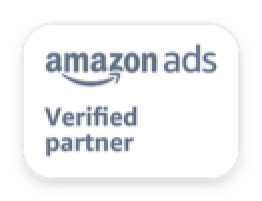- Home
- Social Media
- Learn
- YouTube Best Practices
How to Use YouTube for Marketing: YouTube Best Practices
Table of Contents:
How to Use YouTube for Marketing
- Statistics on YouTube
- Creating a Channel
- Producing a Video
- Adding Extra Content to a Video
- Embedding a Video
- Promoting a Video
- Getting Subscribers
- YouTube Paid Promotion
- YouTube Best Practices
YouTube best practices
When you’re working with YouTube, not all marketing strategies are equal. That’s why YouTube has its own set of best practices. It’s helpful to occasionally do an audit of your YouTube search engine optimization (SEO) just like you would on Google.
Titles
When you’re writing the title of your video, you can’t simply spam keywords. That has the same effect as keyword stuffing in SEO, and it’ll actually turn viewers away instead of attracting them.
Instead, you should title your video with a high-profile keyword first, followed by your brand.
So if you posted a video about how to clean windows, one potential title could be “How to Clean Windows | Your Business.”
This format is similar to titles in SEO, and there’s a good reason — it works.
Descriptions
Descriptions are truncated on your video, which makes it difficult get people to read what you want to say.
That’s why it’s so important to use a call to action in the first three sentences of your description. You should also incorporate the same keywords that are in your title and tags, plus a URL to a corresponding page on your website.
This is a lot of information to fit in the first three sentences of a description, but it can make a huge difference in driving traffic to your site.
Tags
Tags are secondary ways of categorizing your video and adding keywords to it.
Tags are most successful when you lead with the keyword that’s most relevant. Then, you can add tags that supplement that keyword so you can show up in a broad range of searches.
While it’s unconfirmed, many YouTube marketers believe that the first tag you use for your video is weighed more heavily than other tags when users search for keywords. But even if they’re not correct, it’s still the first tag that your users will see, which tells them that they’ve found the right video for their needs.
Transcript
Transcripts are excellent opportunities to add text-based content to your video. Adding transcripts to your videos helps them show up better in Google results and other search engines, and it’s practically essential for blind or deaf users to understand your content. (Blind users commonly use screen reader software with braille input options.)
With a transcript, you dramatically improve the SEO power of your video, and you make it more user-friendly for all of your potential viewers.
Closed captioning
Like transcripts, closed captioning is helpful for differently-abled YouTube users — primarily the deaf. Adding closed captions ensures YouTube doesn’t have to interpret the dialogue of your video, which isn’t always accurate.
Instead, you supply the exact phrasing so there’s no doubt as to what you’re saying.
Annotations / Cards
Annotations and cards don’t have inherent search value, but they’re helpful for adding bits of text throughout a video so you can emphasize points.
Typically, you should only use one or two annotations / cards in each video. Too many will make your video appear spammy and force viewers away.
Thumbnails
Thumbnails are the static previews of your video that users see when your video shows up in search or your channel.
Since they’re your first interaction with a viewer, it’s important that you make an independent thumbnail for each video that features a high-contrast, eye-catching image.
If you let YouTube select a thumbnail, there’s a chance that you’ll get a pixelated or interpolated image in return.
Now that you know how to promote your videos organically, let’s take a look at YouTube’s paid options.
Consistency
When you’re using YouTube to promote a brand, consistency is the single most important element of success. And when you couple consistency with quality, you get excellent results.
Schedule a single, repeatable time when you’ll upload new videos and follow that schedule to a T. That lets viewers know when to expect new videos, which establishes regularity.
Regularly uploading videos also keeps your brand alive on YouTube and a contributing, active member of the community.
Start marketing on YouTube today
Are you ready to market your company on YouTube? WebFX is here to help you out!
Contact us today to create a YouTube marketing strategy that’ll help your business grow!
Go Back
Related Resources
- Sell Directly to Your Customers with YouTube Shopping
- What is the Best Time to Post on YouTube in 2025?
- Why YouTube Matters to Marketing [INFOGRAPHIC]
- YouTube Ad Examples: 6 Examples of YouTube Ads That Inspire
- YouTube Demographics, Statistics, and Data Every Marketer Should Know
- YouTube Marketing for Beginners: How to Get Your YouTube Strategy off the Ground
- YouTube vs. Podcast: Which is Right for Your Business?
- YouTube vs. Vimeo
- 5 Buzzworthy YouTube Video Ideas for 2025
- 6 Tips for Optimizing Your YouTube Mobile Profile
Marketing Tips for Niche Industries
- Top 3 Social Media Platforms for Outdoor Product Companies
- Top 4 Social Media Tips for Swimming Pool Companies
- Top 5 Social Media Tips for Biotech Companies in 2025
- Why Social Media for Hotels and Resorts Fills Rooms
- 12 Simple Social Media Tips for Construction
- 18 Tips and Ideas to Make Social Media for Roofing Companies a Success
- 3 Benefits of Social Media for Event Planners (And the Best Platforms to Use)
- 3 Best Social Networks for Industrial Companies
- 3 Facebook Marketing Tips for Ecommerce
- 3 Must-Have Elements of Effective Facebook Marketing for Dentists
Find Us Driving Revenue Nationwide
- Social Media for Toronto, CA
- Social Media for Washington, DC
- Social Media Services for Lancaster, PA
- York, PA Social Media Agency
- Ann Arbor, MI Social Media Agency
- Central Pennsylvania Social Media Marketing
- Social Media for Atlanta, GA
- Social Media for Baltimore, MD
- Social Media for Boston, MA
- Social Media for Charlotte, NC











